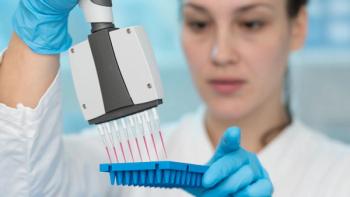
- BioPharm International-01-01-2017
- Volume 30
- Issue 1
The Evolving Role of HTA Bodies Sparks Scrutiny
How involved should HTA bodies be in assessing cost effectiveness and reimbursements?
Governments in Europe are increasingly looking to health technology assessment (HTA) organizations to help them gain a tighter grip on expenditure within the region’s predominantly state-funded healthcare services. As a result, the pharmaceutical industry is having to deal with a rising number of HTA bodies. Currently there are more than 50 national and regional HTA organizations in the 28-member states of the European Union and in non-EU states such as Norway and Switzerland. Their main task is to assess the clinical effectiveness of a new medicine in relation to similar products on the market so that an HTA can help in the fixing of the drug’s price and of the level of reimbursement at the national level.
A broadening scope of responsibilities
Many of the HTA organizations tend to have different assessment procedures and criteria for judging the added value of a product. Furthermore, a growing number of HTAs are moving beyond the clinical domain to investigate aspects such as cost-effectiveness, budget impacts, ethical and legal issues, and broader social and economic questions. This shift is bringing HTAs into what some drug producers would regard as borderline areas such as consideration of preclinical R&D costs, process development, and choice of formulations.
With some new medicines, acquiring a positive HTA can be as big a challenge as gaining authorization from a regulatory agency. There can be gaps of several years between a drug being licensed in a country and being given the go-ahead for reimbursement within its healthcare system. There are widening disparities in patients’ access to new medicines across the EU due to delays in reimbursement decisions. To speed up assessments by minimizing unexpected complications during investigation procedures, HTA bodies have been allowed to join regulators in giving preliminary scientific advice early in the drug development process. The objective is that this HTA guidance should concentrate on issues relating to the planning and design of clinical trials so that they provide data relevant to requirements of a technology assessment.
The industry’s perspectives
Governments are under pressure, however, to encourage HTA bodies to broaden their expertise so that they can have an even greater influence on drug development beyond clinical trials particularly in areas such as cost effectiveness. But the pharmaceutical industry has made clear that this widening of responsibilities should not involve assessments of manufacturing processes and their costs.
“At present, HTA bodies do not hold the knowledge and understanding to provide scientific advice in respect of production processes, in particular bio-manufacturing processes,” a spokesman for the European Federation of Pharmaceutical Industries and Associations (EFPIA) told BioPharm International. He pointed out that the London-based European Medicines Agency (EMA) and national licensing authorities have specialist knowledge of how production processes can affect the quality, safety, and efficacy of medicines. “We would consider this kind of expertise [in HTA bodies] as unnecessary to assess the clinical benefit of a new medical technology, including new medicines,” he continued. “It would be a superfluous duplication of expertise, processes, and assessments, if HTA bodies were to set out to develop expertise on production processes.”
EFPIA and other representatives of research-based drug companies are also not keen about the idea of HTAs’ scope being extended to R&D costs when dealing with cost effectiveness and impacts on healthcare budgets. “R&D costs are [not] relevant in setting reimbursement levels,” says the EFPIA spokesman. “Including R&D costs [in assessments] is not only difficult practically, as R&D costs are not attributable to one single product or country, but are shared across multiple projects and multiple regions. It is also inefficient. Setting the reimbursement level in relation purely to the costs of development, including R&D, would mean rewarding inefficient research and production processes.”
Cost effectiveness and access to medicines
Nonetheless, HTA organizations are participating in discussions with drug companies about lowering their planned prices for new medicines by cutting costs, including process costs, to make the prices more acceptable. The United Kingdom’s National Institute for Health and Care Excellence (NICE), one of Europe’s largest and longest established assessment bodies responsible for HTAs in England, has been given the role by the British government of vetting new oncology drugs, whose reimbursements costs are covered by a Cancer Drugs Fund (CDF). Money available annually under the fund was recently increased by NHS England, part of the UK’s state-funded National Health Service (NHS), more than five-fold since 2010 to £340 million ($432 million) (1).
To make the CDF drugs more quickly accessible to cancer patients after they are licensed, they are assessed by NICE during their development on the basis of quality-adjusted life years (QALYs) or how many years a treatment adds to a person’s life and the quality of those years. One QALY is equivalent to one year of perfect health so that if a patient’s state of health falls below that level, it is rated less than one QALY per year.
NICE has been setting a threshold of £20,000-30,000 per QALY when deciding whether a new drug is cost-effective and should be approved for widespread use, according to a study by York University’s Centre for Health Economics (2). But it has also been approving new technologies at more than £40,000 per QALY (2).
In October 2016, NICE jointly proposed with NHS England a tiered system of categorizing new medicines by their cost-effectiveness on the basis of QALYs (3). Medicines whose cost effectiveness ratio fell below £10,000 per QALY could be put through a “fast track” NICE assessment. Medicines based on highly specialized technologies, such as those for treatments of rare diseases, would be given an upper limit of £100,000 per QALY to qualify for an HTA. Drug companies have been having to lower their prices by cutting costs to bring their medicines within the QALY threshold.
NICE stresses that when calculating cost-effectiveness, it does not need to investigate production processes or overall R&D costs. “Consideration of cost effectiveness does not require consideration of R&D costs,” an NICE official told BioPharm International. “[Our assessments] are based on patient outcomes measured in QALY with cost effectiveness measured in cost/QALY. The evaluation of production processes is part of the role of the regulator and NICE does not need to consider this.”
Drug pricing, R&D, and production costs
However, the political momentum behind calls for closer examination of the relationship between drug prices and R&D costs as well as production costs has been gathering pace. The European Parliament’s environment, public health, and food safety committee (ENVI) has demanded greater transparency of research data and costs. “The cost of development and clinical trials is crucial in order to set fair prices,” noted Soledad Cabezon Ruiz, rapporteur of an ENVI report on EU options for improving access to medicines (4). “A fair price should cover the cost of the drug development and production, plus a margin of profit,” she added.
Amidst the potential for greater use of personalized medicines resulting from the application of advanced technologies such as gene and cell therapies, production is likely to take up a higher proportion of some individual drugs costs. As a result, these new technologies could raise the profile of manufacturing costs, in particular when inconsistencies in production performance in the early stages of development can raise total R&D costs.
Collaborations and joint assessments
The European Council, representing the EU member states governments, urged in 2015 the drawing up of central guidance and criteria on HTAs of personalized medicines. It also suggested that there should be more co-operation between HTA bodies in the assessment of the medicines (5).
Over the past few years, HTA agencies have been joining together through a European network (EUnetHTA) to carry out joint assessments so that they can share expertise more effectively, particularly in areas where there is a shortage of specialist knowledge within assessment bodies. “Collaboration and knowledge-sharing amongst HTA bodies can contribute to increased expertise and more efficient HTA systems,” Ancel.la Santos, policy advisor at Health Action International (HAI), a Dutch-based NGO campaigning on medicines access issues, told BioPharm International.
“Cooperation can be particularly relevant in the context of more complex technologies and therapies,” she explained. “Collaboration between HTA bodies should preserve high quality standards, result in the improvement of methodologies and assessments where needed, and take into account local country specificities.”
EUnetHTA launched in June, 2016 its third and biggest joint action program for the period 2016-2020 with the objective of carrying out, with the help of mainly EU funds of €20 million, 80 joint assessments or projects, compared to 20 under the previous program (6). In an impact assessment of cooperation activities in HTAs, the European Commission, warned that the latest joint program may be the last to be financed by the EU (6).
“The uptake of joint work at EU level (for use in) national decision-making processes has remained low, leading to duplication of work by national/regional HTA authorities,” said the commission’s study (6). “It is not rational to invest public funds into HTA co-operation at European level if the uptake of the work is not improved and the duplication of the efforts is not avoided.” The big difficulty is that the EU states cling on to their right to reach their own drug pricing and reimbursement decisions. This independence is undermining the benefits of HTA co-operation and holding back the broadening of the expertise in HTA bodies.
References
1. NHS England, Appraisal and Funding of Cancer Drugs from July 2016 (including the new Cancer Drugs Fund), (London, July 2016).
2. Centre for Health Economics, York University, Policy & Research Briefing. Pharmaceutical Pricing: Early Access, The Cancer Drugs Fund and the Role of NICE (York, March 2016).
3. NICE and NHS England, Proposals for Changes to the Arrangements for Evaluating and Funding Drugs and Other Health Technologies Appraised through NICE’s Technology Appraisal and Highly Specialized Technologies Programme (London, October 2016).
4. Committee on the Environment, Public Health and Food Safety (ENVI), European Parliament, EU Options for Improving Access to Medicines, Draft report 2016/2057 (INI) (Brussels, September 2016).
5. Council of the European Union, Council Conclusions on Personalized Medicine for Patients (2015/C 421/03) (Brussels, December 2015).
6. European Commission, Inception Impact Assessment, “Strengthening of the EU cooperation in Health Technology Assessment (HTA)” (Brussels, September 2016).
Article Details
BioPharm International
Vol. 30, No. 1
January 2017
Pages: 54-56
Citation
When referring to this article, please cite it as S. Milmo, "The Evolving Role of HTA Bodies Sparks Scrutiny," BioPharm International 30 (1) January 2017.
Articles in this issue
almost 9 years ago
Fully Automated Capping Systemsalmost 9 years ago
Monitoring Temperature-Controlled Chambersalmost 9 years ago
Point-of-Use Leak Testing of Single-Use Bag Assembliesalmost 9 years ago
Staffing and Preparation for Auditsalmost 9 years ago
Packaging’s Flexible, Patient-Centered Futurealmost 9 years ago
The Tide Stays Highalmost 9 years ago
Drug Quality Key to Innovation and Accessalmost 9 years ago
Using Microcalorimetry to Accelerate Drug Developmentalmost 9 years ago
Global Drug Spending: A Look Aheadalmost 9 years ago
New Year, New Challenges AheadNewsletter
Stay at the forefront of biopharmaceutical innovation—subscribe to BioPharm International for expert insights on drug development, manufacturing, compliance, and more.





